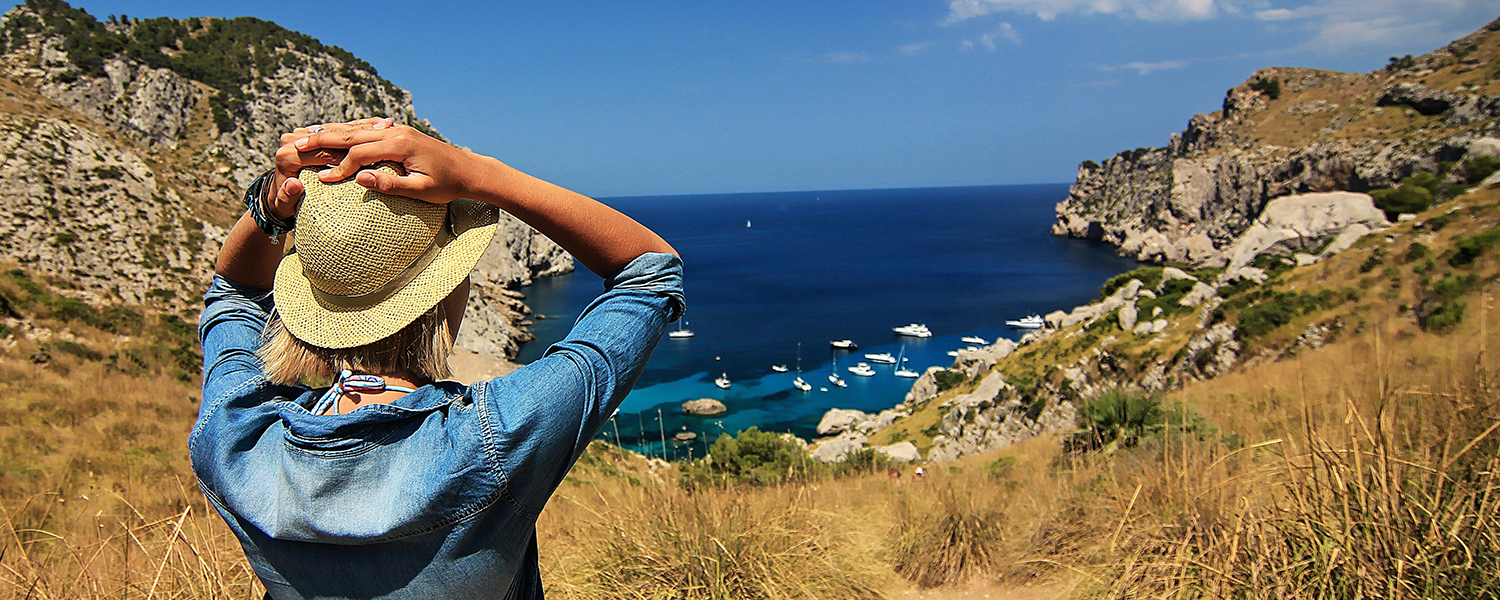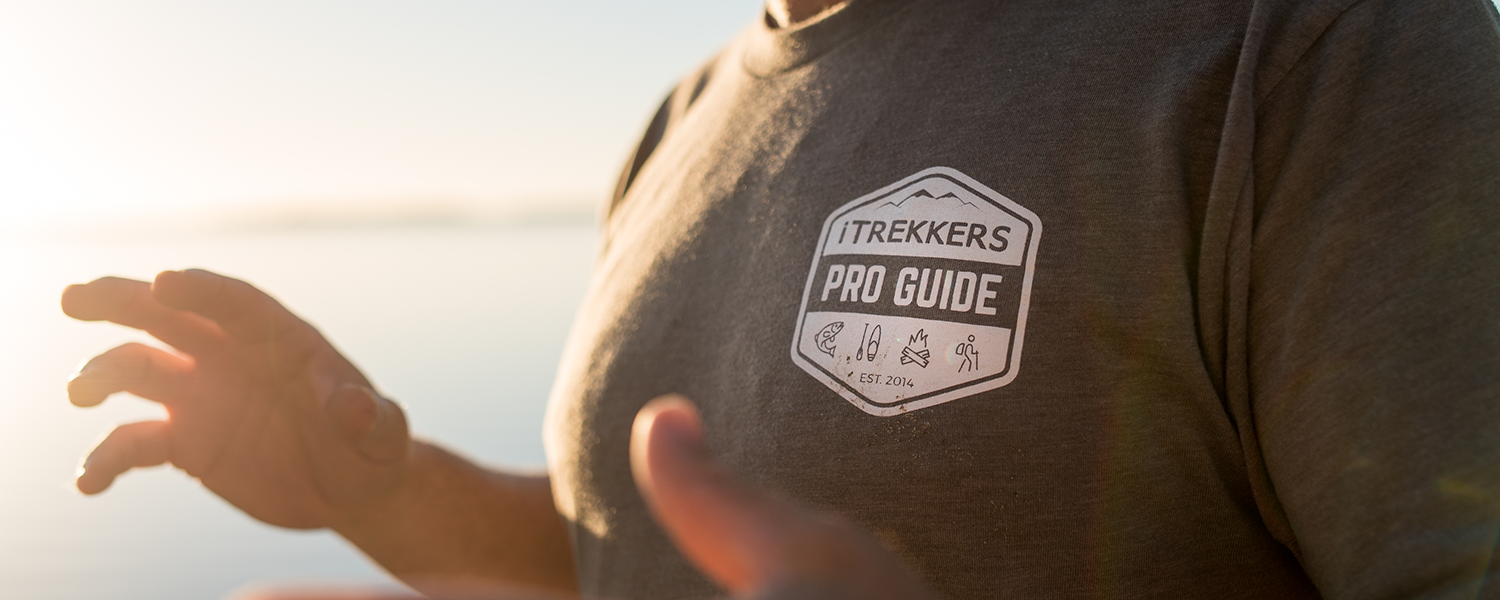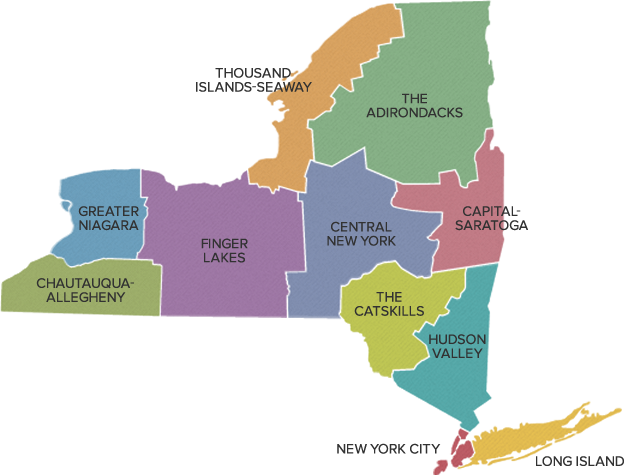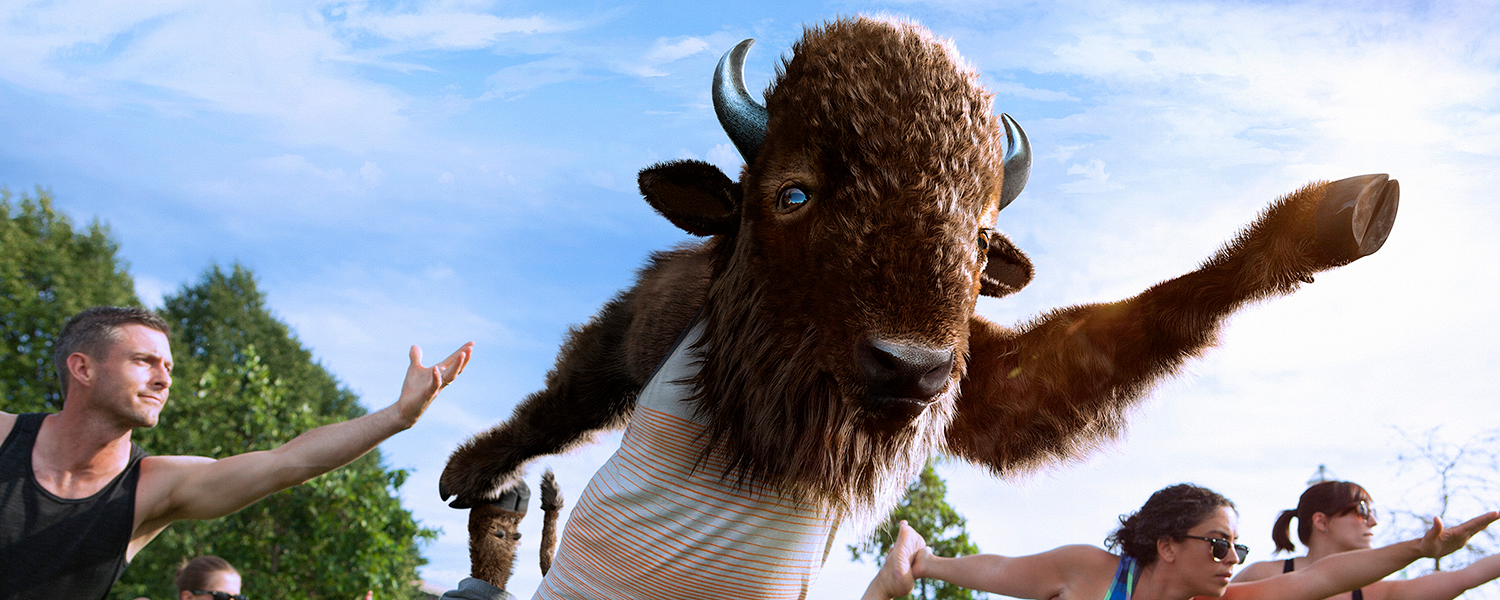Nicole Mahoney Solocast Episode #4
Episode 53: Five Major Trends for the Travel and Tourism Industry in 2018, with Nicole Mahoney
In this episode, you will learn about five of the biggest travel trends to pay attention to in 2018.
Nicole Mahoney started Break the Ice Media in 2009 in response to the evolving needs of small to medium-sized businesses, in particular, the rise of social media. Break the Ice Media is a boutique marketing and communications firm with a focus on travel, tourism, food, wine, and hospitality. As CEO, Nicole is responsible for working with clients to understand their marketing needs, develop strategic marketing plans and execute those plans. She is also responsible for building a team that can deliver.
Break the Ice Media specializes in collaborations that leverage resources of multiple partners for the creation of successful marketing programs within the travel and hospitality industry. Break the Ice Media views these programs as “coop-etition” where partners cooperate with their competition to create a program that is larger than one they can execute alone. Building these programs requires a leader who is level-headed, an effective listener, with an ability to move a group towards consensus in order to move forward.
Nicole received a Bachelor of Science in Business Administration from Rochester Institute of Technology and a Master of Arts in Communications from The College at Brockport, SUNY.
Nicole loves the Finger Lakes region of New York State where she was born and raised. She is raising 4 daughters with her husband, John.
5 Trends for 2018
As we approach the close of 2017 and are busy making plans for 2018, I wanted to take a moment to reflect on the year, what we have learned, and what lies ahead.
First, thank you for listening to this podcast. My hope is that you get as much inspiration and new ideas out of these podcasts as I do. I learn something new every week and I hope you do too!
I love sharing my interviews with travel and tourism professionals with you. If you enjoy them too, I would greatly appreciate you writing a review of my podcast. Click the iTunes or Stitcher link on the Destination on the Left website and leave a rating and review. It only takes a minute and your support means a lot. Thank you!
I decided to end the year with another solocast episode. On today’s show, I will share 5 trends that we are planning for in 2018 and beyond. As I think about these trends, I can’t help but reflect on the past year and the many conversations that I have had throughout 2017. You will find these reflections sprinkled throughout this solocast.
Trend number one – Everything is digital.
While digital is not a new trend, what is new is that digital is part of our everyday lives, it is here to stay and finding ways to reach people and inspire them to travel to your destination or attraction is more important than ever. As digital is maturing, so are the ways we use it as a marketing tool. For starters, social media is integral to everyone’s marketing strategy. For travel, exploring social channels beyond Facebook and Twitter is critical.
In Episode 35, Jessica Reilly from the Break the Ice Media team explains that “Lots of people are going through their channels on their phone and you want your content to be visual enough and enticing enough that people stop scrolling and read what you have to say. …According to a recent study, when people read information, they’re likely to only remember about 10% of that information three days later. However, if that information is paired with a relevant and eye-catching image, people can retain up to 65% of the information. It really goes to show just how important being visual is in social media.”

Source: William Iven on Unsplash
[bctt tweet=”“People only remember 10% of info they’ve read 3 days later. If that is paired with a relevant and eye-catching image, people can retain up to 65% of the information.” – @jessica_reills #podcast”]
With photos being integral to creating interest and inspiration for travel to a destination, channels such as Snapchat, Instagram and Pinterest should be part of your social media mix. In Episode 51, Louise Cottrell explains how Pinterest can drive traffic to a destinations website. She explains, “Pinterest is a social bookmarking tool. Most things that you see on there, are actually links to places around the web. Sharing articles and images and keyword optimizing them and also curating content from other sources that are related to your topics will get exposure to your brand. Your audience will engage with the content, save it, share it, and spread it, and then more people will see it and this is what drives clicks back to your website. It’s the only social media channel where they encourage people to leave because they want people to find what they’re looking for. On Pinterest, it’s all about links.”
Another big change for next year is the impact that changes to Facebook’s algorithm will have on organic reach. It will become increasingly important to include a Facebook ad strategy in your communications plan. As Camille Zess from the Break The Ice Media explains in her blog article on Break The Ice Media.com “In 2012, Facebook added the ‘Boost’ button on posts to simplify their advertising platform for small businesses. Unfortunately, the boost function simplifies too much and limits the power of your dollars. It limits your capabilities for just about every aspect of Facebook advertising: audience targeting, campaign goals, tracking and so on.” Camille recommends using targeted Facebook ad campaigns to supplement your organic reach on Facebook. Camille shares more information on how to do this in Episode 9 and she offers a free downloadable slide deck with more details on our website at https://breaktheicemedia.com/capabilities/facebook-advertising/
With all of this focus on social and online content, digital influencers will continue to be a trend for 2018. Finding the right personalities to work with and leveraging their audience to help extend your brand will be key. Colleen Knopeck from our team provided great advice on working with Digital or Social influencers in Episode 36 where she suggests that you “look at the quality of their followers. Don’t get caught up in the number of followers they have. Instead, look at how many people are engaging with their posts and if the influencer is responding to any questions or comments that the people may have. Then look at who their audience is and see if it matches your target audience.” Colleen shares more information about this strategy in her blog titled “A DMO’s Guide to working with Travel Influencers.”
Trend number two – Millennials aren’t the only target market to keep your eye on.
I attended a travel trends webinar earlier this month hosted by Miles Partnership and Phocuswright. One of the trends they highlighted that I couldn’t agree with more is that the Boomers are still a very lucrative and viable travel demographic. Boomers are almost all empty nesters by now. They have more time and money than the millennials. Boomers are taking fewer trips than millennials but the trips they take are longer, they plan more in advance and they spend more. 40% of Boomers will spend more than $3000 per person per trip. For the next ten years, we will see a good run of travel from this group.

[bctt tweet=”“Boomers are still a very lucrative travel market. They take fewer trips than Millennials, but they travel longer and spend more money.” – Nicole Mahoney #WhyCollaborate #podcast”]
Another group that was mentioned in the webinar is the family travel market. As more millennials start families, the patterns of family travel will continue to evolve and change. As Rainer Jenss, Founder of the Family Travel Association explained in Episode 33, “Americans are starting to use travel agents again, and that’s being led by Millennials. Interestingly, and more than one research study has confirmed that millennials are twice as likely to use a travel agent as even baby boomers. Up to 40% of millennials have used a travel agent or will consider doing so, and it goes against all conventional wisdom, but the reason you’re seeing that is because all the choices and resources that they have online are overwhelming, and they like to do the research, and be informed, but realize that a travel agent can kind of help with all of this noise and all of these options together and have them, meaning the agents, plan it for them.”
Trend number three – Continued demand for tours and activities.
Another trend mentioned on the Miles Partnership/Phocuswright webinar is the increase in demand for experiences or tours and activities. The tours and activities sector of the travel industry represented $147 billion in sales in 2016 and it is continuing to grow leaps and bounds over the rest of the travel segment at a rate of 9% year over year. That is compared to a growth rate of 6% year over year for the rest of the travel industry.

[bctt tweet=”“In 2017, demand for tours and activities grew 9%, while the rest of the industry grew 6%. In 2018, demand for this sector will continue to grow” #podcast.” #podcast”]
Tom Mulliez, my guest on Episode 48 is taking advantage of this trend with his start-up company iTREKKERS. Tom described his company this way, “iTREKKERS is a vehicle to get people outdoors who don’t get outdoors. That, in a nutshell, is what we’ve always tried to do. Now we’ve pivoted a few times and we’ve kind of maneuvered our way to the new iTREKKERS of what we are today. In the beginning it was a platform where we could connect consumers with independent vetted guides. We’ve got 125 guides, we’re across the entirety of the state of Florida, we offer multiple activities, fishing, camping hiking and paddle, where we basically take people who don’t have gear and we pair them up with people who do have gear and are experts in their field to increase a chance of having the best possible experience in the outdoors.”
Tom continued his explanation of pivoting this way, “Our big assumption is that people weren’t getting outdoors because they didn’t know where to go or they didn’t know who trust and we thought we could be that trusted voice and we had that. We were successful in bridging that gap, but what we realized while doing this was when people went on adventures with our in-house guides their experience was typically two or three times better than when they went with one of the top vetted guides in our network. That’s not because of a skill set difference or anything like that, but that’s because we worked really hard to train our in-house guides on the personality side of things, the customer first mentality, really going and taking the service to that next level. Most independent guides, they’re their own business person and they weren’t really doing that as much or didn’t have access to that training.”
Even given the growth in this travel segment, the majority of bookings are happening offline, either through a traditional phone in reservation system or by walk-up business. This is starting to shift however, in 2011 just 11% of tours & activities suppliers were using a 3rd party booking agent or reservation system, in 2016 that number has climbed to 45%. The real trend to watch here is how exponentially this segment will grow once more suppliers become bookable online.
Trend number 4 – International travelers will have a significant impact on 2nd and 3rd tier destinations.
As international travel continues to rise globally, the impact for smaller destinations will become stronger and more noticeable. In the US for example, with the new 10-year visa program we are seeing visitors from China coming back to the States more frequently. With each subsequent visit, they become more independent and curious about deeper experiences beyond the typical gateway cities and must see attractions. While international travel still includes many group travel options, we are seeing a larger shift to FIT (Foreign Independent Travellers) than we have seen in previous years. This means that smaller destinations must get ready to host these travelers and they need to understand the travel distribution channels to know how to market to this very lucrative audience.

[bctt tweet=”“As international travel continues to rise globally, the impact for smaller destinations will become stronger and more noticeable.” – Nicole Mahoney #WhyCollaborate #podcast”]
As I explain in detail in Episode 38, “International travelers – especially those from overseas – buy travel differently. They buy through a retail outlet such as a travel agent, tour operator or an OTA (online travel agent). In order to buy travel through one of these sources, there needs to be “product on the shelf” – in other words, it has to be in the inventory of what these retail outlets have to sell. That means that tourism suppliers – the businesses that sell experiences, attractions and accommodations – need to have a relationship with these resellers. They need to sell their rooms, admission fees, packages at a wholesale price to the retailer so that the retailer can markup that package, room or admission fee and make a margin or a profit. In turn, the tourism supplier will be marketed to the potential customers of that retail agent.”
Trend number 5 – Travel Tech will continue to change the way we buy, consume and market travel.
Staying ahead of the curve is a daunting thought. You must have a thirst for learning, stay open to new ideas, and continuously educate yourself about what is next. The buzz about artificial intelligence (AI) and Virtual Reality impacting travel and how we market and service visitors is real. It is already happening.
In Episode 50, Ed Healy from Visit Buffalo Niagara shared with us their exploration with this technology. Visit Buffalo Niagara recently released a chatbot to service customers through Facebook Messenger. As Ed explains, “we’ve had to be very imaginative in how we conceive of Buffalo as a place to live, work, and visit and be very imaginative in terms of how we market it and our messaging. We also have to challenge ourselves as professionals, in terms of being open to all of these new tools that come along. Actually, Visit Buffalo Niagara recently had launched what we believe is the first chatbot that any DMO has ever offered to the traveling public in the entire country if not the world. This is embracing new technology and being aware of what’s out there and always trying to be on the cutting edge so that our potential visitors can access information about our destination in every possible format. Now a chatbot is really kind of an automated way to deploy information that people use who are on Facebook. You use Facebook Messenger to send a message to Visit Buffalo Niagara to the Unexpected Buffalo, and there’s a variety of options you can choose in terms of things to see and do, places to eat, accommodations, etc.
“We’ve also recently added Natural Language Processing to the chatbot so, if you’re interested in best pizza, you can type those keywords in, and the chatbot will return the best places to have pizza in Buffalo, which we’re well-known for. That’s just the most recent example of trying to stay abreast of new technology and emerging trends and take advantage of them on behalf of our destination.”
Chatbots, bitcoin, gaming, VR and AI are all new technologies that will have an impact on travel and will change it from what we know today.

Credit: Eric Frick
[bctt tweet=”“Chatbots, bitcoin, gaming, VR and AI are new technologies that will have an impact on travel and change it from what we know today. ” – Nicole Mahoney #WhyCollaborate #podcast”]
A final thought that I’d like to leave you with as you are thinking about 2018 trends and reflecting on 2017 is to adopt the practice of cathedral thinking. I explored this concept with Rick Antonson on Episode 44. Rick explained Cathedral Thinking like this, “if you were an architect in the 1400s and your town, your village, your city came to you and asked you to design the new cathedral, you would begin a project which you knew you would not live to see completed. If I was the stone mason and I was putting in place the foundation blocks or the cornerstone, I’d be doing so knowing that it would be a grandson or a granddaughter, of my own or of a neighbor’s, who would be doing the final touches as the cathedral completed long after I’d passed away.”
He goes on to explain, “It is the only way to keep the living generation tethered to the future. It’s about doing things today that are very important, intrinsically so, but the beneficiaries may not yet be born. It helps us in a simple way to conceive of the importance of long-term thinking, of being involved, each of us, in unfinished work, and seeing that what we do today has to have a way to be built upon, not just by a colleague in contemporary times, but by a son and daughter, a future colleague that may join our firm or our organization or our community long after we ourselves have left it. It is keeping in mind that the details, the importance, the integrity that we approach today’s work with needs to be able to be applicable for others to bring new tools, new skills of a new generation, and continue the good work.”
I wish all of you a prosperous 2018 and look forward to bringing you many more interesting and inspiring interviews in the year ahead. Thank you for listening. We will be back in the New Year!
We value your thoughts and feedback and would love to hear from you. Leave us a review on your favorite streaming platform to let us know what you want to hear more of. Here is a quick tutorial on how to leave us a rating and review on iTunes!







